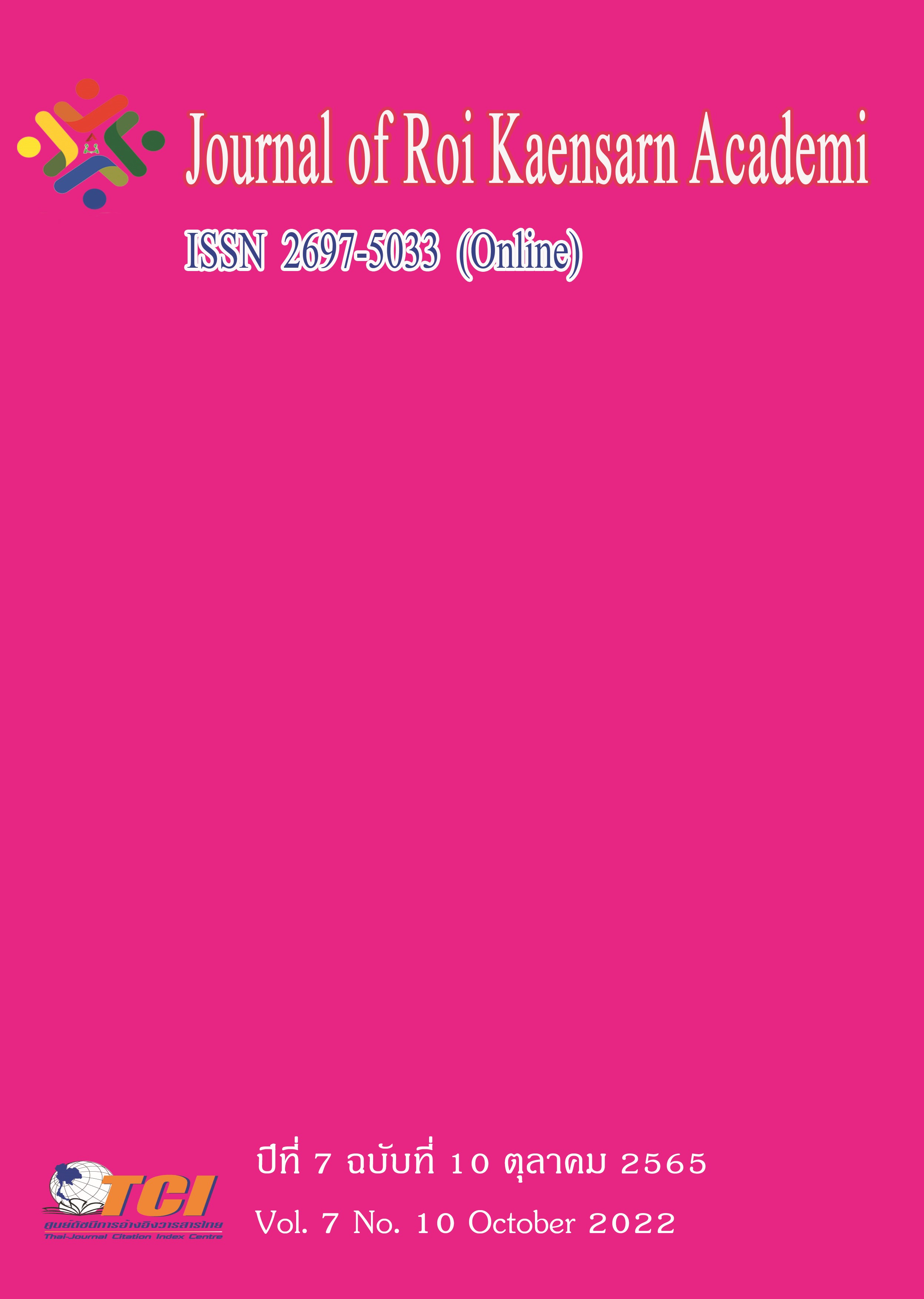An Analysis of Discourse Practice of Political Speeches : A Case Study of Donald Trump
Main Article Content
บทคัดย่อ
World leaders’ political speeches have become fashionable topics in terms of discourse analysis and language study. The language used in powerful speeches might lead to some changes, support, beliefs, conflicts, or even war. The recent study aimed to determine the discourse practices in the political speeches of Donald Trump. The samples were 20 political speeches by Donald Trump in the Famous Presidential Speeches of the Miller Center from January 19, 2019, to July 4, 2020. The research instrument was Chilton, P. & Schaffner, C.'s (1997 : 145) discourse practice analysis. The statistics used to analyze the data was frequency. The result of the study revealed that Donald Trump's 11 political speeches expressed legitimation as the most common political discourse and demonstrated expressive communication as the most common communicative purpose, which confirmed that every political speech concealed its purpose. In summary, the audience became a target for participating in either action; they, as a result, should be more than consumers of information but defenders of their rights and the rights of the public.
Article Details
เอกสารอ้างอิง
Allen, W. (2007). Australian Political Discourse: Pronominal Choice in Campaign Speeches. Annual Meeting of the Australian Linguistic Society, Brisbane, Australia, 7-9 July, 2006. St Lucia, Australia: School of English, Media & Art History, University of Queensland. Pages 1-13.
Al-Radhi, H. (2020). Strategic Functions in CNN’s Media Discourse an Ideological Strategy to Win People’s Support a Critical Discourse Analysis Study. International Journal of Applied Linguistics and English Literature, 9 (3), 43-54.
Chilton, P. & Schaffner, C. (1997). Discourse and Politics. London: Sage.
Drechselova, L & Celik, A. (2019). Kurds in Turkey: Ethnographies of Heterogeneous Experiences. Lanham: Lexington Books.
Fairclough, N. (1995). Critical Discourse Analysis: The Critical Study of Language. London: Edward Arnold.
Fowler, R., Hodge, B., Kress, G. & Trew, T. (2018). Language and Control. London: Rutledge and Keegan Paul.
Green, K. (2012). The Symbolic Politics Theory of Ethnic War. Quebec: McGill University.
Hassan, I. H. (2016). Critical Discourse Analysis of the Political Speech of the Egyptian President, Abdel Fattah El-Sisi, at the New Suez Canal Inauguration Ceremony. International Journal of Language and Literature, 4 (1), 85-106. URL: https://doi.org/10.15640/ijll.v4n1a10
Haugaard, M. & Lentner, H. (2006). Hegemony and Power: Consensus and Coercion in Contemporary Politics. Lanham: Rowman & Littlefield.
José, M. & García, H. (2013). Legitimization and Delegitimization Strategies on Terrorism : A Corpus-Based Analysis of Building Metaphors. International Pragmatics Association, 23 (2), 301-330.
Jason, S. W., Anne, G., Danette, I. J. & Bernardo, A. A. (2012). Public Speaking Practice and Ethics v.1.0. Retrieved July 11, 2020 from academia.edu/23224848/Public _Speaking _Practice_and_Ethics_v_1_0
Kaewmoragot, P. (2017). Political Participation Culture of Youths in Multicultural Society : A Case Study of Thepha District, Songkhla Province. Master of Arts Program in Politics and Development Strategy, National Institute Development Administration.
Kardkarnklai, U. (2015). Business Discourse: Disciplinary Development, Analytical Approaches and Research Trends. Journal of Social Science and Humanities Research in Asia, 21(2), 285-311.
Luo, Z. (2020). Study on the Prevention and Controlling of Dissimilation of Social Functions of Commercial Banks Based on the Fulfillment of Social Responsibility of Chinese Commercial Banks. Modern Economics & Management Forum, 1(2), 58-63.
Maneesaeng, V. (2016). Political Discourses of Thai Democrat Party 1946–1958. Veridian E-Journal Silpakorn University, 10(2), 2789-2802.
Mansour, N. (2013). A Proposed Model for Investigating the Translation of Political Messages. Assistant Professor Institute for Linguistics studies & Translation Alexandria University. Linguistics & English Literature, 9(3), 43-54.
Matthaveewong, T. (2016). The Critical Discourse Analysis of “Returning Happiness to the People” TV Program. Master of Arts Program in Mass Communication Administration, Thammasat University.
Obeng, S. G. & Hartford, B. A. S. (2009). Political Discourse Analysis. New York: Hauppauge.
Paltridge, B. (2012). Discourse Analysis: An Introduction. London: Bloombury Publishing.
Phakdeephasuk, S. (2010). A Discourse Project on Femininity in Thai Health and Beauty Magazines. Research Report. Research Institute : Chulalongkorn University.
Phanphothong, N. (2014). Linguistic Strategies in Female Homosexuality Discourse Analysis of @tomactz Magazines. Journal of Language, Religion and Culture, 6(1), 59-82.
Phonok, C. (2018). Political Literacy. Daily News (June 1, 2018): 23.
Poggi, I., Errico, F. D., Vincze, L. & Vinciarelli, A. (2010). Multimodal Communication in Political Speech Shaping Minds and Social Action. Milan : Springer.
Prachumchai, S. & Sriraungrith, A. (2020). A Discourse Analysis of Political Speeches: Donald Trump. Research Report. Institute of Research and Development : Phetchabun Rajabhat University.
Rahimi, E. & Sharififar, M. (2015). Critical Discourse Analysis of Political Speeches: A Case Study of Obama's and Rouhani's Speeches at UN. Theory and Practice in Language Studies, 5(2), 343-349.
Sadeghi, B., Hassani, M. T. & Jalali, V. (2014). Towards (De-)legitimation Discursive Strategies in News Coverage of Egyptian Protest : VOA & Fars News in Focus. ScienceDirect: Procedia-Social and Behavioral Sciences 98, 1580-1589.
Sawangarom, A. (2017). A Study of Referendum Discourse of the PM General Prayut Chan-o-cha via the Return of Happiness TV Program. Master of Arts Program in Communication and Innovation, National Institute Development Administration.
Schweber, H. (2012). Democracy and Authenticity: Toward a Theory of Public Justification. Cambridge: Cambridge University Press.
Sturzaker, J. & Verdini, G. (2017). Opposition and Resistance: Governance ChAllen, W.ges around Urban Growth in China and the UK. Journal of Urban Management, 6 (1), 30-41.
Sulaiman, A. K. & Jamil, N. (2014). Demonizing Demonstration: (De-)legitimization Strategies through Emotions in the Speeches of Hosni Mubarak and Ben Ali. Middle-East Journal of Scientific Research 20 (Language for Communication and Learning), 1-10.
Dijk, T. A. van. (2000). Ideology: A Multidisciplinary Approach. London: SAGE Publications Ltd. https://dx.doi.org/10.4135/9781446217856
Wenden, A. L. (2005). The Politics of Representation: A Critical Discourse Analysis of an Aljazeera Special Report. International Journal of Peace Studies, 10(2), 89-112.
Wodak, R. (2007). Pragmatics and Critical Discourse Analysis: A Cross-Disciplinary Inquiry. Pragmatics & Cognition, John Benjamins Publishing Company, 15(1), 203 – 225. doi:10.1075/pc.15.1.13wod

